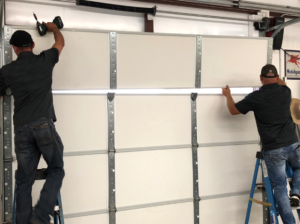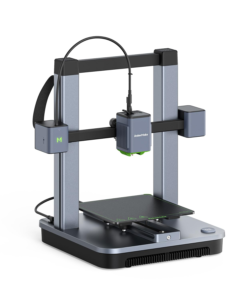A garage door is a vital part of your home’s security, so it’s important to keep it in working order. If you notice any problems, call a repair professional to fix them quickly. Contact Garage Door Repair Buckeye AZ now!
Prompt repairs can prevent minor issues from escalating into costly ones. They can also save you money on replacement parts and labor costs.

The cost of garage door repair depends on the type and extent of damage. It also varies by labor rates in your area and the expertise of the repair person. Complex repairs, like replacing a door panel or window, are more expensive than simple fixes, such as sensor alignment. In general, wood doors are more costly than steel or fiberglass doors because of the materials and skilled labor required to install them.
The most common garage door repairs involve the sensors, tracks, and opener system. Faults in these components can result in serious problems, such as a door that won’t open or close. It’s best to consult a professional for these repairs because they require in-depth knowledge of mechanical and electrical systems. A professional can quickly diagnose and fix problems that aren’t obvious to the untrained eye, saving you time and money in the long run.
Sensor Repairs
A damaged sensor can cause the garage door to continue closing, which is a safety hazard for people and pets. The cost of a sensor repair averages $100 to $150, and it typically involves rewiring or realigning the sensor. It’s important to check the sensors regularly and remove anything that could block them, like a car or bicycle.
Garage Door Panel Repairs
Dents and cracks are common on garage doors, but they don’t necessarily affect the structural integrity of the door. Depending on the severity of the damage, a repair person may be able to hammer out dents and repaint the panel for an even finish. However, if the damage is severe, it’s best to replace the panel.
Tracks and Rollers
Repairing a garage door’s tracks and rollers is usually a quick and affordable job. Tracks and rollers are usually made of metal or plastic, and they can get bent or rusted over time. The repair person can lubricate the parts to reduce friction and keep them moving smoothly. It’s also important to replace the rollers once they become worn down, as this can cause them to break or bend.
Safety
Garage doors are very complex mechanical systems, and as a result they can be hazardous to handle without the proper training. Professional technicians have extensive knowledge of both mechanical and electrical components, allowing them to quickly diagnose problems and make repairs safely. Their training also allows them to recognize worn parts that may soon fail, saving homeowners money by preventing costly replacements in the future.
Attempting DIY repairs can be dangerous, especially when working with high-tension springs. In addition, many issues with garage doors are complex and require specialized tools or equipment to resolve. Inexperienced repairmen may be tempted to bypass these measures in order to save time and money, but this can lead to more serious problems down the road. For example, attempting to replace a broken spring without the right equipment can be extremely dangerous and result in injuries or even death.
Professionals are required to follow strict safety protocols when handling garage door hardware and navigating complicated repairs. This includes wearing personal protective equipment, maintaining equipment and following detailed instructions or repair manuals. In addition, they are trained to work with high-tension springs and the weight of heavy garage doors.
Homeowners can greatly reduce the risk of injury by performing regular maintenance on their garage doors. This includes performing visual inspections of all components, including springs, cables, rollers and openers, for signs of wear or damage. Additionally, lubricating moving parts regularly can significantly prolong their life and reduce wear and tear.
Another important safety measure is to test and ensure that the door’s sensors are functioning correctly. Sensors are designed to detect obstructions in the path of the garage door and automatically reverse its movement to prevent accidents. To test the sensors, simply place an object (such as a roll of paper towels) in the path of the door and activate it. If the door fails to detect the object and reverse its motion, there is likely an issue with the sensors’ alignment or wiring.
It is also a good idea to periodically tighten loose bolts, hinges and screws on the garage door. Over time, temperature changes can cause these parts to loosen, which can put the door at risk of unexpected failure or create an unsafe environment for children and pets.
Warranty
When hiring a company to perform repairs or replacements, warranty information is important. This includes what parts are covered and the duration of coverage. It is also important to know what restrictions apply. For instance, if a homeowner attempts to fix the door themselves, this may be considered an alteration and void the warranty. This can be a costly mistake as it may lead to the problem getting worse or turning into a different issue that will require more extensive repairs.
A garage door repair warranty provides peace of mind, knowing that the company stands behind their work. It is a good indicator of the quality of their service and the integrity of the products they use. Whether it is a limited lifetime warranty or a workmanship guarantee, having one in place protects homeowners from unexpected expenses related to the repairs.
It is also a good idea to compare quotes from different companies to ensure that you get the best price for the services you need. A good way to do this is to ask for detailed estimates that include a breakdown of costs for parts and labor. Also, be wary of significantly low quotes, as they may indicate subpar service or hidden fees.
Regardless of the type of garage door you have, the elements can cause problems that need to be fixed right away. For example, high winds can damage doors and create gaps or dents. In addition, inclement weather can damage the finish on your garage door. If this happens, you need to find a garage door repair company that offers a replacement warranty.
This will cover the cost of the new garage door and any associated charges. However, you should make sure to read the fine print to understand what is and is not included in the warranty. One common restriction is regular maintenance requirements, such as lubrication or system checks. Also, if the door is damaged by natural disasters or other factors outside of the manufacturer’s control, the warranty may not be valid.
Inquiring about warranties before signing a contract with a repair company is vital for understanding the scope of work, managing expectations and maintaining a cooperative working relationship. It is also important to be familiar with contract details, including payment terms and schedules, liability issues, and insurance coverage. This will help prevent disagreements and potential misunderstandings that can occur during the repair process.
Time
Several factors determine the cost of garage door repair. Some of these factors include the type and extent of damage, labor costs based on location and timing, supply chain disruptions, and market conditions that affect part prices and availability. Having a clear understanding of these factors will help business owners make more informed decisions about the best course of action for their maintenance budgets.
A garage door is a crucial element of a home or commercial property. Keeping it in good condition will ensure that it functions properly and provides security for the building and its occupants. Moreover, regular inspections can identify potential problems before they escalate into costly emergencies, contributing both peace of mind and long-term savings for the property owner.
Many people have trouble deciding whether to repair or replace their garage doors when they are in need of repairs. A common metric used to evaluate this decision is the cost of the repair compared with the cost of a new door. However, there are a few other key considerations that should also be taken into account when making this decision.
The first factor is the extent of the damage. If the damage is limited to a single panel, it may be cheaper to repair it rather than replacing the entire garage door. On the other hand, if multiple panels are damaged or if the overall structure is compromised, it may be more cost-effective to purchase a new door.
Another factor to consider is the frequency of repairs needed. If a door requires frequent repairs, it could be a sign that it is nearing the end of its lifespan and should be replaced. Lastly, if the cost of repair is significantly higher than the value of the door, it may be more cost-effective to buy a new one.
The time it takes to perform garage door repair varies depending on the complexity of the issue. For example, a standard spring replacement or opener adjustment can usually be completed within 2-4 hours by a professional technician. More extensive repairs that require a major mechanical overhaul or significant structural repairs can take up to a full day.








